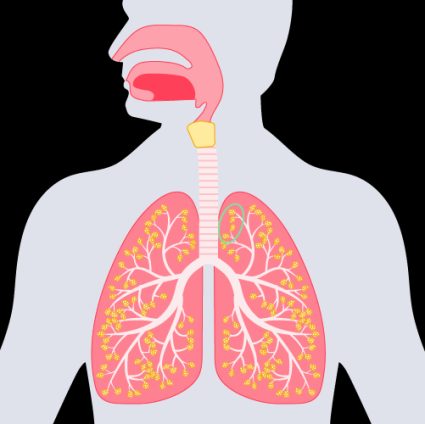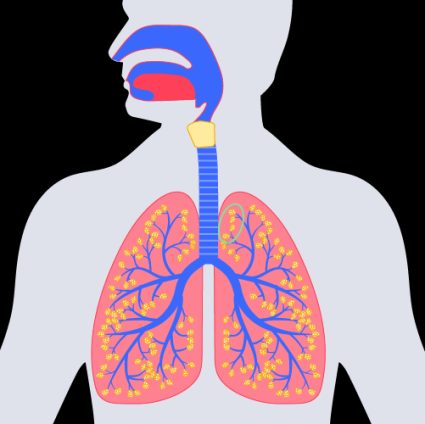Dead Space Calculator
Our dead space calculator is the ultimate tool for calculating physiological dead space. Enter your given values, and you'll get your result in a split second.
Calculating the dead space volume can help you determine how much of your air volume is not used for breathing. This helps you understand how efficient your breathing is. It's important not only for diagnosis but also for your doctor to make therapy adjustments.
In the following article, we'll explain:
- What dead space is;
- Basic terminology — ventilation vs. respiration;
- How to calculate dead space using the Bohr equation;
- How to use this dead space calculator; and
- How to interpret your results.
🔎 Are you interested in medical calculators? Check out our health calculators section! You might stumble upon exciting calculators, such as our sleep calculator.
We try our best to make our Omni Calculators as precise and reliable as possible. However, this tool can never replace a professional doctor's assessment. If any health condition bothers you, consult a physician.
What is dead space?
Dead space refers to the volume of inhaled air that does not participate in gas exchange. The term refers to all lung tissue and airways except alveoli with gas exchange taking place. It describes the parts of the respiratory system beyond the alveoli, like the nose, mouth, and trachea, as well as alveoli that are damaged and no longer function properly. This also includes devices that are connected to your airways, such as diving equipment or breathing aids.
Our tool calculates the functional dead space, often called physiological dead space.
Types of dead space
Anatomical dead space
Anatomical dead space includes all air-conducting parts of the respiratory tract, including the nasal cavity, oral cavity, pharynx, trachea, bronchi, and bronchioles.

Alveolar dead space
Alveolar dead space includes the alveolar space that is not perfused and, therefore, cannot participate in gas exchange. That’s correct — if no blood flows through the alveoli, CO₂ cannot be released from the blood, nor can O₂ be absorbed.

💡 Why is there an alveolar space without blood flow? Well, these alveoli were once working but lost their function due to lung damage, such as smoking.
Functional dead space
Functional, or physiological, dead space comprises anatomical and alveolar dead space. Anatomical dead space consists of the air-conducting airways, while the alveolar dead space refers to the portion of the alveolar region that does not participate in gas exchange.

💡 In a healthy patient with no lung damage, there is no alveolar dead space. So the anatomical dead space and the functional dead space are the same.
Ventilation vs. respiration
To understand dead space, we first need to grasp the concepts of ventilation and respiration. As you may have already noticed, we distinguish between parts of the respiratory system that participate in gas exchange and those that do not. In other words, we separate the airways from the alveoli, where gas exchange occurs. The division of these sections comes from the concepts of ventilation and respiration.
Ventilation is the movement of air in and out of the lungs, while respiration is the biochemical process where gas exchange occurs.
Dead space, then, is simply the part of the respiratory system where only ventilation occurs. In contrast, the remaining lung tissue is where respiration, or gas exchange, takes place.
Dead space formula — the Bohr equation
Physiological dead space can be determined using the Bohr equation, named after the scientist Christian Bohr. If you share our interest in physics, you might know his son Niels Bohr, who invented the Bohr model by describing the structure of an atom. If you are not familiar with this model, we invite you to check out our Bohr model calculator.
The Bohr equation for the dead space formula is:
where:
- pDS — Physiological dead space;
- alCO₂ — Alveolar CO₂ concentration;
- exCO₂ — Expiratory CO concentration; and
- TV — Tidal volume.
Let’s calculate an example using this formula!
Assume the following:
- An alveolar CO₂ concentration of 40 mmHg;
- An expiratory CO₂ concentration of 30 mmHg; and
- A tidal volume of 0.5 L.
Input the given values into the formula, and receive:
You obtain a dead space of 0.125 L. Based on the result, we can conclude that 25% of the tidal volume does not participate in gas exchange, which is quite a normal value for a healthy individual.
Feel free to check this result using our dead space calculator! In the following section, you’ll find a step-by-step guide on how to use it.
How to use the dead space calculator
Our tool is based on the same dead space formula that we mentioned in the previous section.
Here is a quick step by step explanation of how to use it:
- Enter your alveolar CO₂. If you want to input a unit other than mmHg, you can use the unit switcher in our calculator.
- Add your expiratory CO₂.
- Input your tidal volume.
- Your result will be displayed instantly!
💡 If you do not know your tidal volume or want to learn more about this value, feel free to use our tidal volume calculator.
How to interpret your physiological dead space value
To interpret your results correctly, you need to know the normal values for dead space volume. Typically, this volume ranges between 150 and 200 ml for healthy adults. If your result falls within this range, there is usually no cause for concern.
Keep in mind that this is not a substitute for a medical consultation, and you should always seek advice from healthcare professionals if you have health concerns!
What if my result is outside this range?
This could be due to your weight not being within the average range. The given range serves as a simplification. The normal value is calculated as 2 ml/kg, meaning twice your body weight. This gives the following rule of thumb:
If your result still falls outside this range, it could be due to various reasons:
- Smoking;
- Air pollution;
- Inflammatory conditions;
- Old age;
- Pregnancy;
- Hyperventilation;
- Pulmonary fibrosis;
- Shock;
- Pulmonary embolism; and
- Other lung diseases.
While an increased dead space is not always a reason for concern, it’s important to discuss your results with a doctor.
What is dead space in lungs?
Dead space refers to the volume of inhaled air that doesn't participate in gas exchange. It includes parts of the respiratory system that are ventilated but where gas exchange doesn't occur.
For a healthy person, this mainly includes conducting airways, like the windpipe. Air moves through these areas, but no gas exchange takes place. However, if there is lung damage, certain areas that would normally support gas exchange may no longer function properly, leading to an increase in dead space.
What is physiological dead space?
Physiological dead space represents the total dead space, which is composed of anatomical and alveolar dead space. Anatomical dead space refers to all air-conducting parts of the respiratory tract, and alveolar dead space is alveolar space that does not participate in gas exchange due to pathological changes in the alveoli.
How do I calculate dead space?
To calculate your dead space, follow these simple instructions:
- Subtract the expiratory CO₂ from your alveolar CO₂.
- Divide your result by the alveolar CO₂.
- Multiply the received value with your tidal volume.
What is the normal value of dead space in an healthy adult?
The normal value of dead space in a healthy adult ranges between 150 and 200 mL.
If your dead space is outside this range, there may be various reasons for this. Firstly, your lungs may have undergone pathological changes, for example due to lung disease or tobacco consumption. On the other hand, breathing aids, pregnancy, obesity or hyperventilation can also lead to an increase in your dead space. Always remember to discuss your results with your doctor.
What is dead space ventilation?
This means that air flows through the dead space, but no gas exchange occurs in this region. Ventilation refers to the movement of air, while respiration pertains to the gas exchange that takes place in the alveolar capillaries.
Respiration, on the other hand, refers to the gas exchange that occurs in the alveoli of the lungs. Oxygen is released into the blood, and carbon dioxide is released from the blood into your lungs so that it can be exhaled.